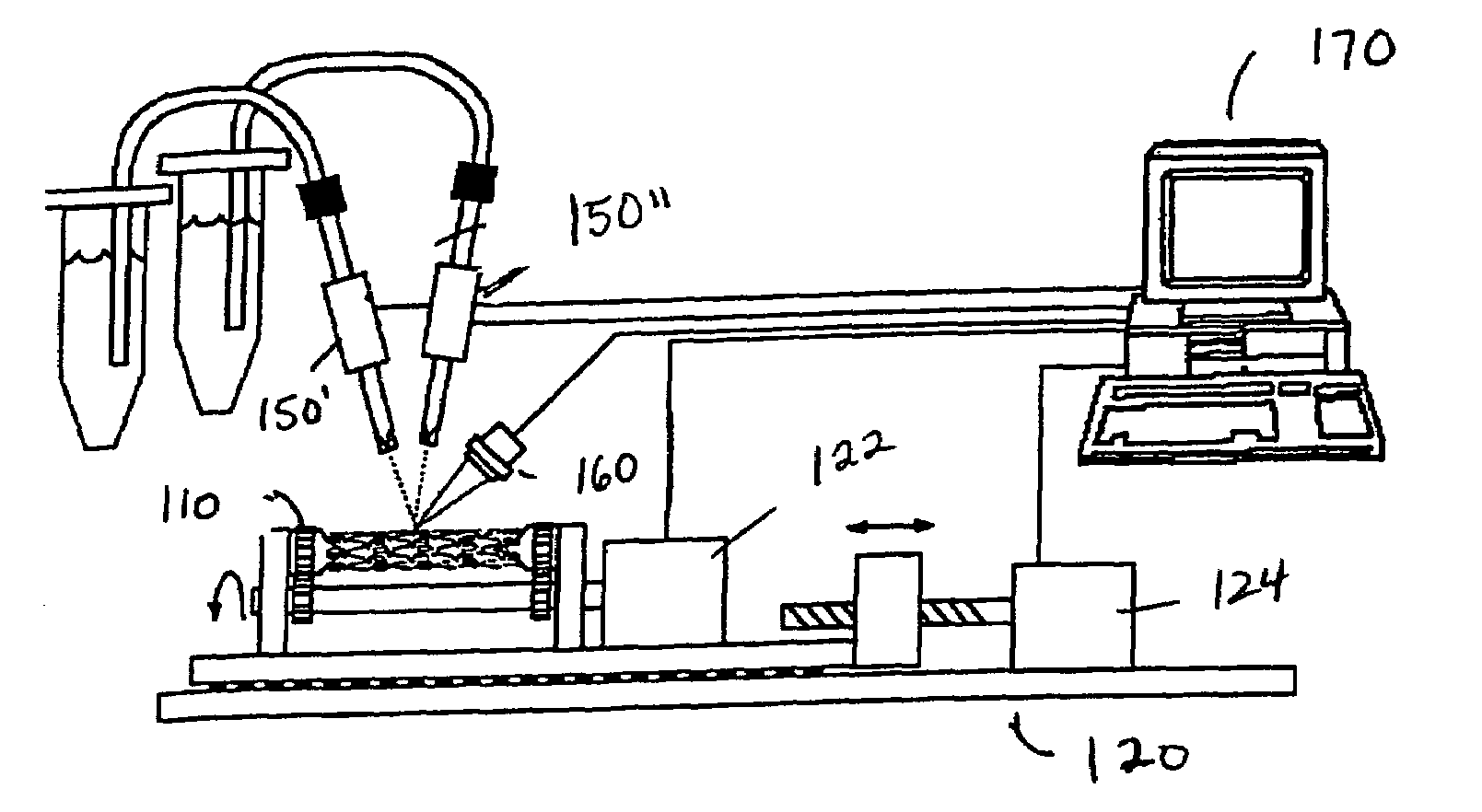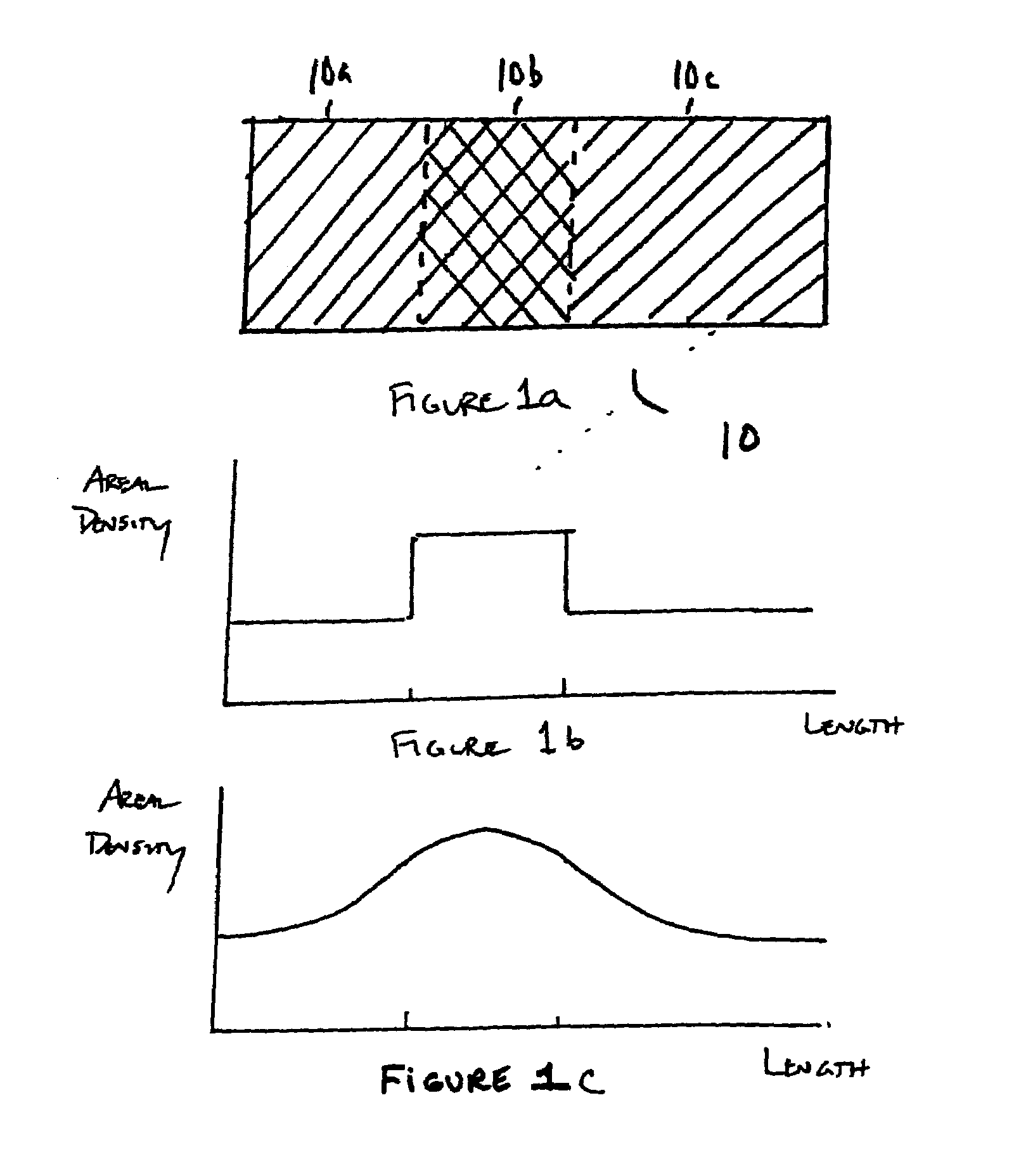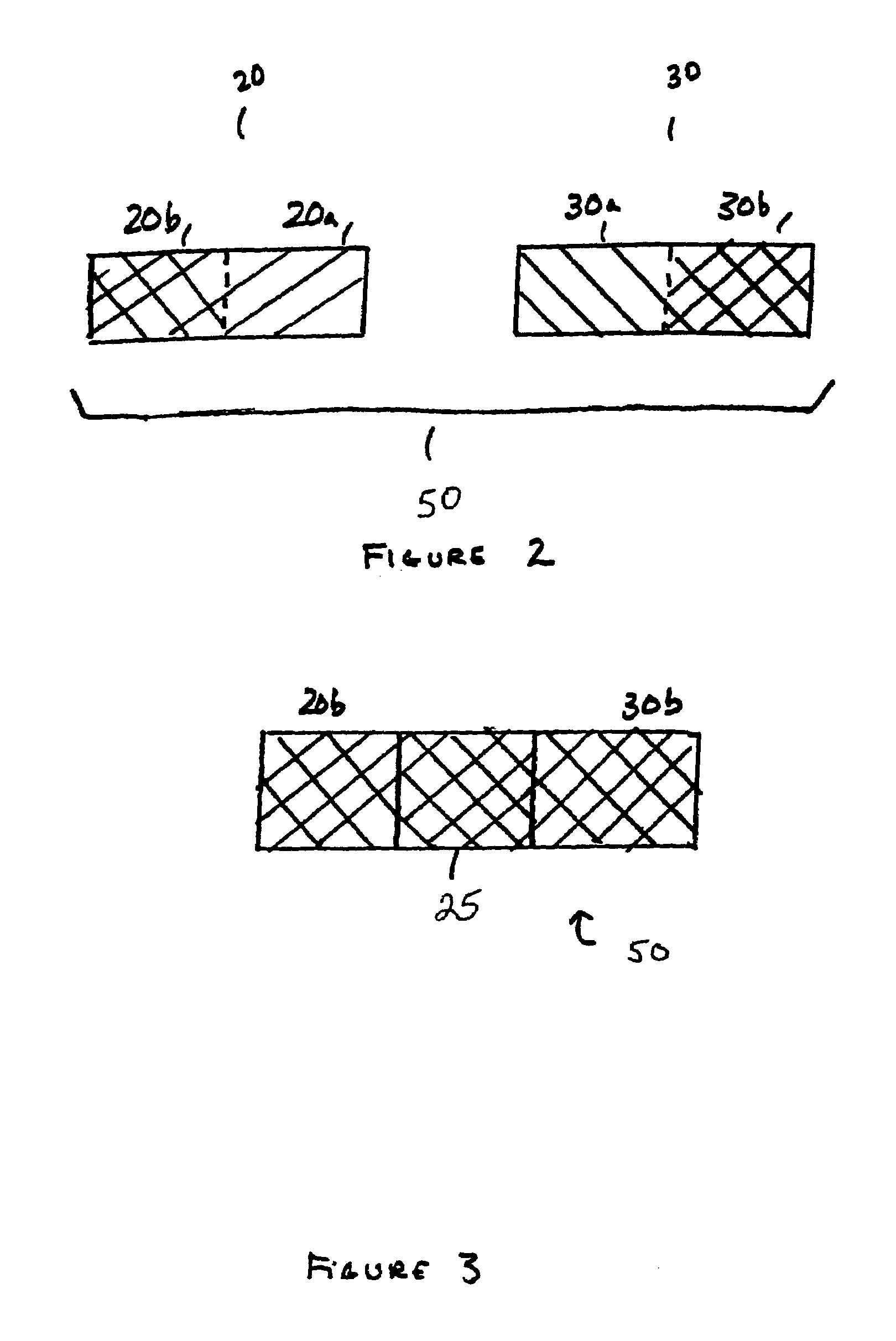Method of loading beneficial agent to a prosthesis by fluid-jet application
a technology of beneficial agents and prostheses, applied in the field of fluid-jet application of beneficial agents to prostheses, can solve the problems of re-narrowing of an artery, blood vessel acute occlusion, variability in drug loading across an interventional device,
- Summary
- Abstract
- Description
- Claims
- Application Information
AI Technical Summary
Benefits of technology
Problems solved by technology
Method used
Image
Examples
example 1
Jetting of Reactive Substances
[0141]The components of a commercial two-part epoxy formulation are mixed by the jetting process and applied to a surface to form a coating. In a formulation manufactured by Buehler, Lake Bluff Ill., one part is a liquid “epoxide resin” that contains 4,4′ isopropylidenediphenol epichlorohydrin resin and butyl glycidyl ether. The second part is a liquid “hardener” that contains diethylene triamine, triethylene tetramine, and polyoxypropylenediamine. In the jetting process, one reagent jet system (A) is loaded with epoxide resin and a second jetting system (B) is loaded with hardener The jets are aligned such that the droplets emanating from each jet combine in midair and travel to the target device to form a crosslinked coating, after a curing time of 2–8 hours. The volume of a droplet emanating from jet A is 5 times larger than the volume of a droplet emanating from Jet B and the total number of droplets dispensed from each jet are approximately equal.
example 2
Jetting of Reactive Substances
[0142]The components of a commercial two-part epoxy formulation are mixed by the jetting process and applied to a surface to form a coating. In a two part commercial formulation manufactured by Buehler, Lake Bluff Ill., one part is a liquid “epoxide resin” which contains 4,4′ isopropylidenediphenol epichlorohydrin resin and butyl glycidyl ether. The second part is a liquid “hardener” that contains diethylene triamine, triethylene tetramine, and polyoxypropylenediamine. In the jetting process, one reagent jet system (A) is loaded with epoxide resin and a second jetting system (B) is loaded with hardener. The jets are aligned such that the droplets emanating from each jet combine in midair and travel to the target device to form a crosslinked coating, after a curing time of 2–8 hours. The volume of a droplet emanating from jet A is 4 times larger than the volume of a droplet emanating from Jet B and the total number of droplets dispensed from each jet are...
example 3
Jetting of Reactive Substances
[0143]The components of a commercial two-part epoxy formulation are mixed by the jetting process and applied to a surface to form a coating. In a two part commercial formulation manufactured by Buehler, Lake Bluff Ill., one part is a liquid “epoxide resin” which contains 4,4′ isopropylidenediphenol epichlorohydrin resin and butyl glycidyl ether. The second part is a liquid “hardener” that contains diethylene triamine, triethylene tetramine, and polyoxypropylenediamine. In the jetting process, one reagent jet system (A) is loaded with epoxide resin and a second jetting system (B) is loaded with hardener. The jets are aligned such that the droplets emanating from each jet combine in midair and travel to the target device to form a crosslinked coating, after a curing time of 2–8 hours. The volume of a droplet emanating from jet A is approximately equal to the volume of a droplet emanating from Jet B, but the total number of droplets dispensed from jet A is...
PUM
| Property | Measurement | Unit |
|---|---|---|
| diameters | aaaaa | aaaaa |
| diameter | aaaaa | aaaaa |
| diameter | aaaaa | aaaaa |
Abstract
Description
Claims
Application Information
 Login to View More
Login to View More - R&D
- Intellectual Property
- Life Sciences
- Materials
- Tech Scout
- Unparalleled Data Quality
- Higher Quality Content
- 60% Fewer Hallucinations
Browse by: Latest US Patents, China's latest patents, Technical Efficacy Thesaurus, Application Domain, Technology Topic, Popular Technical Reports.
© 2025 PatSnap. All rights reserved.Legal|Privacy policy|Modern Slavery Act Transparency Statement|Sitemap|About US| Contact US: help@patsnap.com



